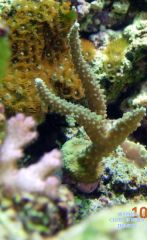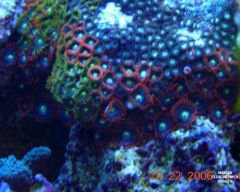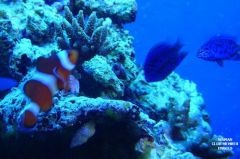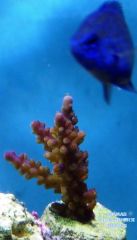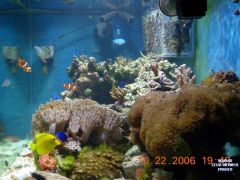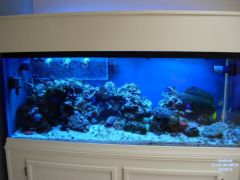
Rascal
BB Participant-
Posts
1,355 -
Joined
-
Last visited
Content Type
Profiles
Forums
Gallery
Events
Store
Everything posted by Rascal
-
From the album: 150 Reef (8/06 - 2/07)
post -
From the album: 150 Reef (8/06 - 2/07)
post -
From the album: 150 Reef (8/06 - 2/07)
post -
From the album: 150 Reef (8/06 - 2/07)
post -
From the album: 150 Reef (8/06 - 2/07)
post -
From the album: 150 Reef (8/06 - 2/07)
post -
From the album: 150 Reef (8/06 - 2/07)
post -
From the album: 150 Reef (8/06 - 2/07)
post -
From the album: 150 Reef (8/06 - 2/07)
post -
From the album: 150 Reef (8/06 - 2/07)
post -
From the album: 150 Reef (8/06 - 2/07)
post pic -
From the album: 150 Reef (8/06 - 2/07)
posting pic -
From the album: 150 Reef (8/06 - 2/07)
? -
hhb: Sorry. From your initial post I feared you were more of a beginner than you are. SG 0.21, desk halogens, no skimmer, adding H20 to ensure a full tank (instead of topping off to maintain stable salinity). All of that had me a little worried, but it appears that you are on the right track. Some questions and suggestions: What are your levels for alkalinity (and/or carbonate hardness), calcium, nitrates, and phosphate? IMO, the only thing you need to supplement in a reef aquarium is alk & calc. You will get trace elements just by doing water changes. Others will have different opinions, but I think all will agree that you shouldn't add anything that you aren't testing for. What are you using (or thinking about using) to maintain calcium and alkalinity? What is your bioload (or stocking plan) with regard to fish, clean-up crew, etc. . . ? When are you getting a skimmer? Seriously, there are some out there who have beatiful tanks which are skimmerless, but this is really an advanced technique. You will find plenty of advice and strong opinions on skimmer choices. I'd be happy to add my voice to the mix if you want. That light set-up should be great. How about flow? You are more than welcome to borrow some of my books. I am in Annandale and work in Fairfax, but we might be able to work something out. Glad to hear your kids are taking an interest. That really is one of the more rewarding aspects of the hobby for me. Yesterday morning as we were watching Pinochio, my 10-year old was ID'ing all the fish to my 18-month old.
-
Noise. Mag24 run externally will be very, very loud. You have roommates, right? I wouldn't worry about the heat addition. IME it didn't make too much difference external vs in sump. Nothing a small fan over your sump can't take care of.
-
No offense to anyone, but I'm not sure that it would be possible for someone without much experience to really learn enough to care from these animals by just being given general "care sheet" type of information about their requirements. I am by no means an expert, but only after keeping a reef tank for almost three years, reading at least 10 carefully chosen books, and spending countless, and I mean countless, hours reading everything I could on wetwebmedia, reefcentral, reefs.org, and this site (I was a silent observer long before I joined) did I even attempt to keep some of the more demanding corals like SPS. I won't even go into all the equipment I have expirimeted with in that time. I am sure there are exceptions in this club, but for most of us this is not something that can be mastered overnight. It is one thing to know the requirements of these animals, still another to know what you actually have to do to meet those requirements, and yet another to be successful at doing so consistently over an extended period of time. If this was easy, we wouldn't have anything to talk about, right? Hbh: Again, please don't take offense to any of this. There is not a person in this club who has not made mistakes at the cost of the livestock they put in their tanks. It is part of learning process. The fact that you found this distressing shows that you care and that this frag meant more to you than just a little decoration to put in your tank. Please do some more research and take the time to get your water parameters more in line with what these animals need before trying again. If you haven't already looked here, you might find that this site has a lot of good information to get you started: http://www.wetwebmedia.com/marine/index.htm. Also all of the pinned forums in the New to the Hobby section on this site.
-
Not sure where you are located, but I have had good luck with Circle Glass in Fairfax on Rte 50.
-
I have had good luck with Tiger Tails and "Donkey Dung" cukes. Mine spend all their time on the sand -- never seen them go up the rocks or the glass. I believe they are obligate detrivores, so I can't imagine they would eat ich or any other protozoans. They do a great job keeping the sand clean. Just make sure you know what you are getting. Start here for some pics to help you id: http://www.wetwebmedia.com/seacukes.htm.
-
Like my generator. "Really honey, it's just so the breast milk in the freezer won't go bad if we have a storm. It's for the good of the baby, honest." As for your question, I don't see any reason it couldn't be done. For example, my RODI goes to a float valve in a rubbermade tank I use as a freshwater resevoir. I have a powerhead in the resevoir plugged into an auto-top-off solenoid. Tubing from powerhead goes through my Kalk reactor and then drips into my sump. If you have something similar, it seems like you could just add a T fitting to the outlet line from your RODI so that 1 line goes to the freshwater resevoir and another line goes to the pressurized tank. Does that make sense? EDIT: drafted this earlier & then sent it before I saw last 2 posts. Looks like you've got it figured out. One other thing to consider is whether you really want to be drinking DI water. Lots of debate on the health issues (http://www.reefcentral.com/forums/showthread.php?s=&threadid=858200&highlight=drinking+rodi+water) which I won't get into. I do agree that it really doesn't taste very good though -- kind of a flat, metalic taste. You may want to have a line go straight from the RO to the drinking water tank and have only the tank water go through the DI canister.
-
Another option: I took the suction cup off of mine and looped a zip-tie through the suction cup and around the pvc pipe for my closed loop manifold. If your tank has plastic trim with a "lip" that hangs over the tank, you could also drill a small hole through this for the zip-tie.
-
Ask John at BRK. I remember him telling me about some PAR readings he took before and after he added lumenarcs to his system. They made a huge difference according to him.
-
My concern would be this: how does a chemical kill one type of worm and not another? Seems to me you would be killing all kinds of stuff. Maybe not big stuff like fish, corals, snails and crabs, but I don't see how you wouldn't take out all kinds of beneficial microfauna along with the flatworms. Like someone said earlier in this thread, "reef safe" is a relative term. I can see if it was a total infestation and you had to sacrifice your small critters to save your larger ones, but personally I don't see the benefit of doing this as a prophylactic measure.
-
I thought that was a pretty broad question, and a good one. Interesting to me, at least. I have been considering incorporating some amount of natural sunlight into my next system. Since this will probably not be for another 12-15 years, I guess I have plenty of time to consider. Anyway, there is a lot of discussion/debate/ideas on this on the boards: http://www.wetwebmedia.com/marsunusefaqs.htm http://www.reefcentral.com/forums/search.p...rder=descending Most, but certainly not all, seem to feel that the addition of sunlight is a good thing, provided that temp can be controlled and nutrients are low. Riley, if you decide to leave as is and see how it does, keep us posted on your experiences and conclusions.


